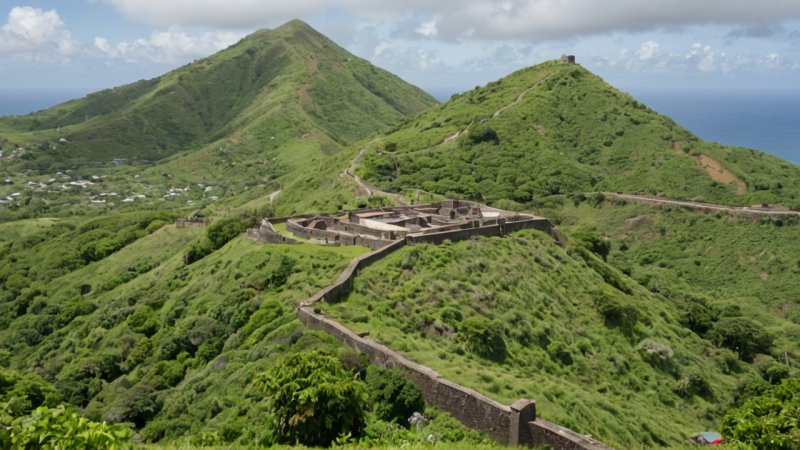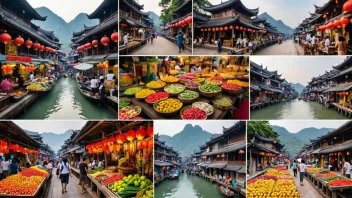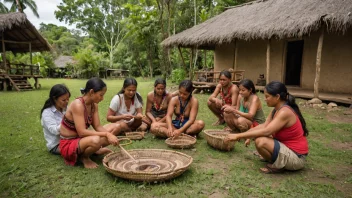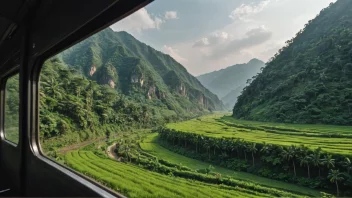The Caribbean is often celebrated for its stunning beaches and vibrant nightlife, but hidden within its picturesque landscapes are treasures of history waiting to be discovered. Though many travelers flock to the well-trodden paths of tourist hotspots, a rich tapestry of lesser-known historical sites offers a glimpse into the diverse cultures and stories that have shaped this region. From ancient ruins to colonial relics, these sites provide an opportunity for deeper exploration and understanding of the Caribbean's past. This article invites you to step off the beaten path and explore some of the Caribbean's little-known historical sites that are sure to enrich your travel experience.
1. The Ruins of the Sugar Plantations in St. Kitts
St. Kitts, one of the oldest sugar-producing islands in the Caribbean, is home to the remnants of its sugar plantation era. The Brimstone Hill Fortress National Park, a UNESCO World Heritage Site, is a prime location to witness the impact of sugar on the island's economy and society. The fortress, built by the British in the 17th century, offers breathtaking views and a peek into military architecture. Nearby, the ruins of the sugar plantations such as the Romney Manor tell stories of the arduous labor and the lives of enslaved Africans who worked the fields. Walking through these sites allows visitors to reflect on the complexities of colonial history while enjoying the natural beauty of the island.
2. The Taino Legacy in the Dominican Republic
Before the arrival of Europeans, the Taino people inhabited much of the Caribbean, including what is now the Dominican Republic. A visit to the Cueva de las Maravillas (Cave of Wonders) gives you a chance to see ancient Taino petroglyphs carved into the cave walls, showcasing their artistic expression and connection to nature. This site is not only a historical treasure but also a stunning natural wonder, featuring impressive stalactites and stalagmites. Exploring the cave offers an insightful glimpse into the life of the Taino, their beliefs, and their relationship with the land.
3. The Historic Town of Falmouth, Jamaica
While many visitors flock to Montego Bay and Negril, the charming town of Falmouth is a hidden gem that boasts well-preserved Georgian architecture and rich history. Founded in the 18th century as a port for sugar export, Falmouth was once one of the wealthiest towns in Jamaica. Today, visitors can wander through the streets lined with beautifully restored buildings and visit the Falmouth Heritage Walk, which highlights significant sites such as the old courthouse and the St. Peter's Anglican Church. The town’s vibrant culture and historical significance make it a worthwhile stop for those looking to explore Jamaica’s colonial past.
4. The Fortress of Louisbourg, Nova Scotia
Though not in the Caribbean, the Fortress of Louisbourg offers a unique perspective on the French colonial experience in the New World, influencing the Caribbean's history indirectly. This historic site is a meticulously reconstructed 18th-century fortress that showcases life during the French colonial period. Visitors can engage with interpreters dressed in period costumes, participate in traditional crafts, and witness reenactments that bring the past to life. For travelers interested in the broader context of colonialism in the Caribbean, a visit to Louisbourg provides valuable insights into the interconnected histories of the Caribbean and North America.
5. The Ancient Petroglyphs of St. Lucia
St. Lucia is known for its stunning natural landscapes, but it is also home to the ancient petroglyphs found in the Morne Fortune area. These rock carvings, believed to be created by the island’s indigenous Arawak and Carib peoples, depict various symbols and images that tell stories of their culture and beliefs. Visiting these petroglyphs offers a chance to connect with the island’s prehistoric past and appreciate the artistry of its early inhabitants. Exploring the surrounding lush landscape adds to the experience, making it a perfect blend of history and nature.
6. The Historic District of San Juan, Puerto Rico
Though San Juan is a popular destination, many travelers overlook the rich history found in its lesser-visited areas. The San Juan National Historic Site includes Fort San Felipe del Morro and Fort San Cristóbal, which were built to protect the city from invaders. These forts offer stunning views of the Atlantic Ocean and are integral to understanding Puerto Rico's colonial history. The surrounding cobblestone streets of Old San Juan are dotted with colorful buildings, local shops, and cafes, making it a delightful area to explore. Delve into the history of these forts and the strategic importance of San Juan during colonial times.
Concluding Thoughts
The Caribbean is a region brimming with history, much of which is overshadowed by its beautiful beaches and resorts. By venturing off the beaten path to discover these little-known historical sites, travelers have the opportunity to gain a deeper appreciation for the unique cultures and histories that define this vibrant region. Each site offers its own narrative, from the echoes of the Taino people to the colonial legacies of sugar plantations. Embrace the stories that lie within these hidden gems, and allow them to enrich your Caribbean travel experience in ways you might have never anticipated. The Caribbean is not just a destination; it is a living museum of history waiting to be explored.






